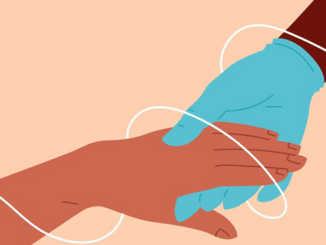
How to cope with the aftermath of traumatic incidents and spot the signs of trauma in those who have been involved in caring for others
CREDIT: This is an edited version of an article that originally appeared on BMA
Vicarious trauma is a process of change resulting from empathetic engagement with trauma survivors. Anyone who engages empathetically with survivors of traumatic incidents – for example, torture, and material relating to their trauma – may potentially be affected, including doctors and other health professionals.
Common signs of ‘vicarious’ trauma
If you are currently, or have recently, been working with survivors of traumatic incidents or torture survivors, you should be aware of the following signs:
- experiencing lingering feelings of anger, rage and sadness about a patient’s victimisation;
- becoming overly emotionally involved with the patient;
- experiencing bystander guilt, shame, feelings of self-doubt
- being preoccupied with thoughts of patients outside of the work situation;
- over-identification with the patient (perhaps having horror and rescue fantasies);
- loss of hope, feelings of pessimism, cynicism;
- distancing, numbing, detachment, cutting patients off, staying busy and avoiding listening to clients’ stories of traumatic experiences;
- difficulty in maintaining professional boundaries with a client, such as overextending oneself (trying to do more than is in the role to help the patient).
If you are experiencing any of these signs, this could indicate that you are suffering from vicarious trauma.
Strategies for reducing risk of vicarious trauma
If you feel you may be suffering from vicarious trauma, try following these coping strategies to reduce the risks.
- Recognise and chart your signs of stress, vicarious trauma and burnout.
- Take care of yourself emotionally by engaging in relaxing and self-soothing activities; nurture self-care.
- Look after your physical and mental wellbeing.
- Maintain a healthy work/life balance with outside interests.
- Be realistic about what you can accomplish, and avoid wishful thinking.
- Don’t take on responsibility for your patients’ wellbeing but supply them with tools to look after themselves.
- Balance your caseload by treating a mix of more and less traumatised clients, victims and non-victims.
- Take regular breaks; take time off when you need to.
- Seek social support from colleagues and family members.
- Use a buddy system.
- Use peer support and opportunities to debrief.
- Take up training opportunities.
- If you need it, take up time-limited group or individual therapy.
There are also significant organisational factors that can increase the risk of a person being vicariously traumatised, which should be assessed and addressed.


Be the first to comment